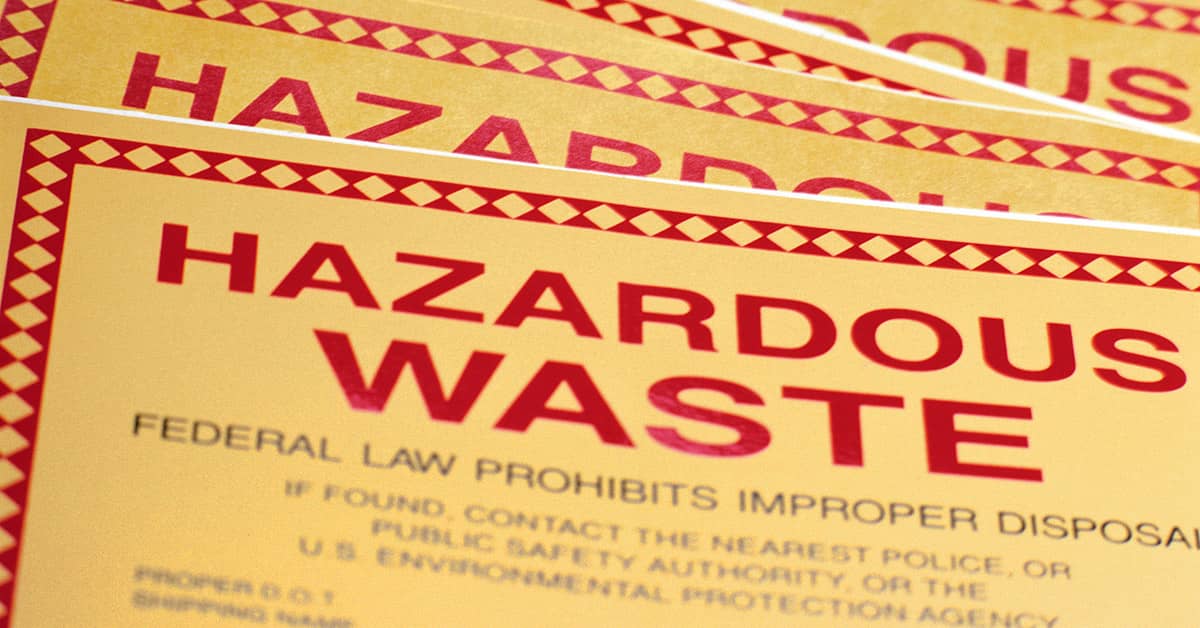Determining your waste determinations
Date Posted: 10/18/2021

The Resource Conservation and Recovery Act (RCRA) is the federal law overseeing solid and hazardous waste management and disposal in the U.S. In addition, many states run their own solid and hazardous waste management programs.
The hazardous waste regulations are intended to protect the environment and people from spills and releases of hazardous waste and improper disposal. Proper management of hazardous waste also protects your company from costly clean-up actions. Hazardous waste is regulated from the time the waste is generated until it is finally disposed of.
Hazardous waste management begins with determining what wastes you are producing, then making a waste determination for each. Waste determination, also called waste identification or waste characterization, is the step where you decide if you have a hazardous waste.
Step 1 - Waste survey
Before you can make a waste determination for a particular waste, you need to identify all of the waste streams — both hazardous and non-hazardous — at your facility. This is called a waste survey.
Waste must be classified at the point of generation, before any mixing or other alteration of the waste occurs. The “point of generation” is the point at which the material is first identified as a solid waste.
Step 2 - Waste identification
Make a waste determination on each of your waste streams (e.g., compact fluorescent light bulbs, batteries, used oil, production wastes, wastewater, spent solvents, etc.). Go through the steps to determine if you have a hazardous waste:
- Do you have a solid waste?
- Is the waste excluded from the definition of solid waste?
- Is the waste a listed or characteristic hazardous waste?
- Does the waste meet an exemption from the definition of hazardous waste?
Step 3 - Ongoing duties
Waste determination is not always a one-time activity. In the case of a waste that may, at some point in the course of its management, exhibit a hazardous waste characteristic, the generator must monitor and reassess the waste.
Generators must keep records of all waste determinations, including records that identify whether a solid waste is a hazardous waste. Records must include your knowledge of the waste and support your determination. The records must include any tests, sampling, waste analyses, records consulted to determine the process by which the waste was generated, the composition of the waste, and the properties of the waste.
How Safety Management Suite Can Help
Hazardous waste generators know what a challenge it can be to stay compliant with state and federal hazardous waste management laws. To help stay compliant, watch our archived webcast “Top 3 Management Practices for Hazardous Waste Generators” from Thursday, October 21, 2021. Topics covered will include best management practices for hazardous waste containers, training hazardous waste personnel, and preparing for spills and emergencies. Log in or register for a free trial to access the webcast archives.
E-mail Newsletter
Sign up to receive the weekly EHS Insider email newsletter for safety articles, news headlines, regulatory alerts, industry events, webcasts, and more.